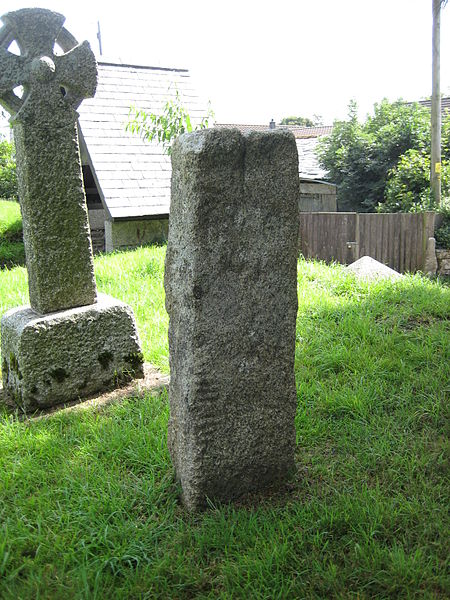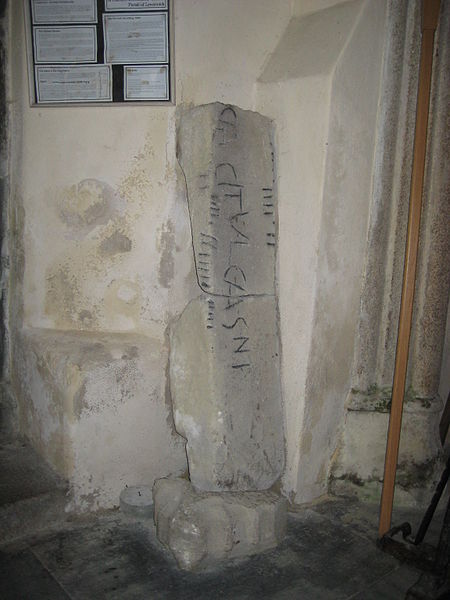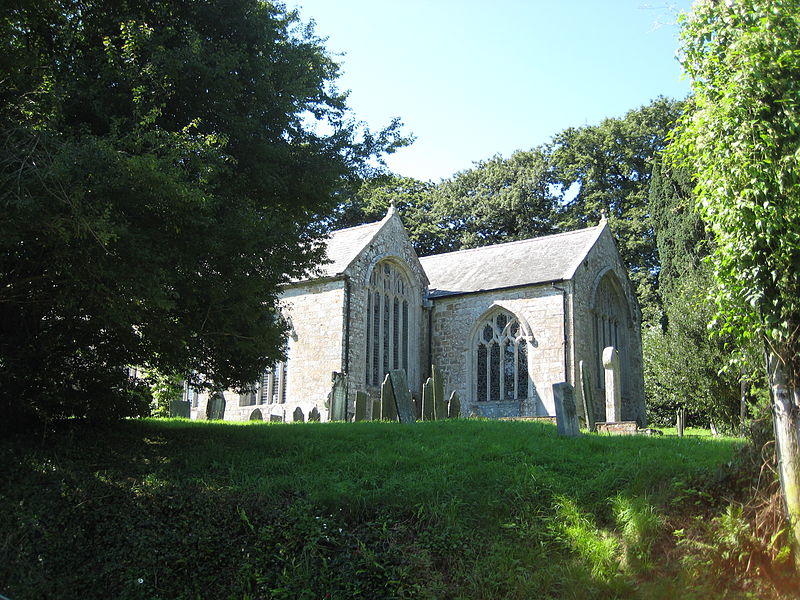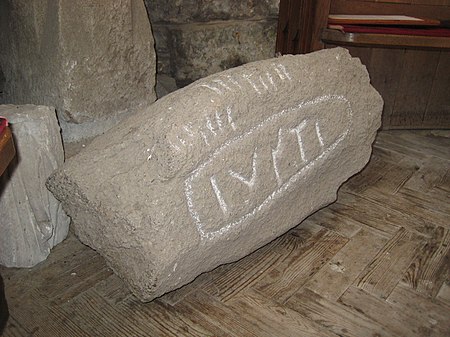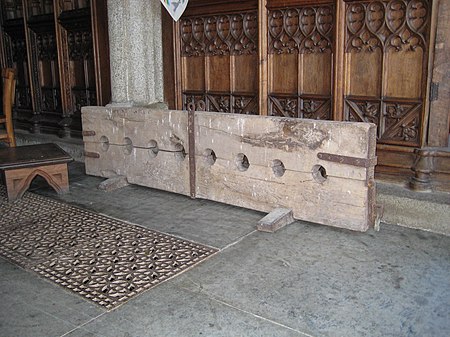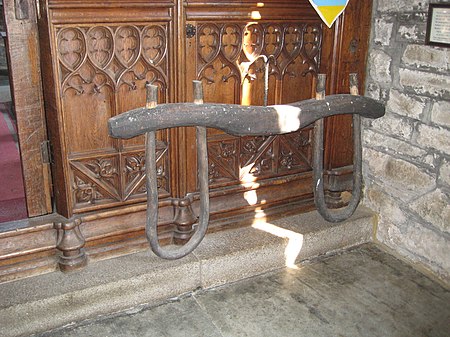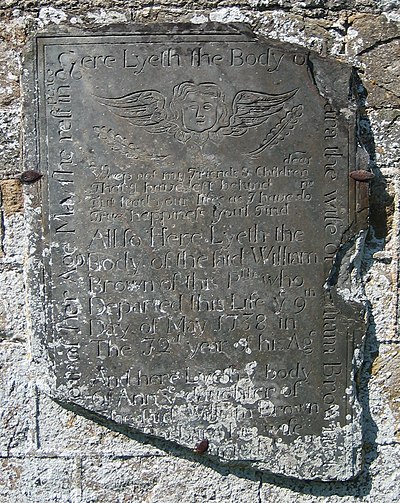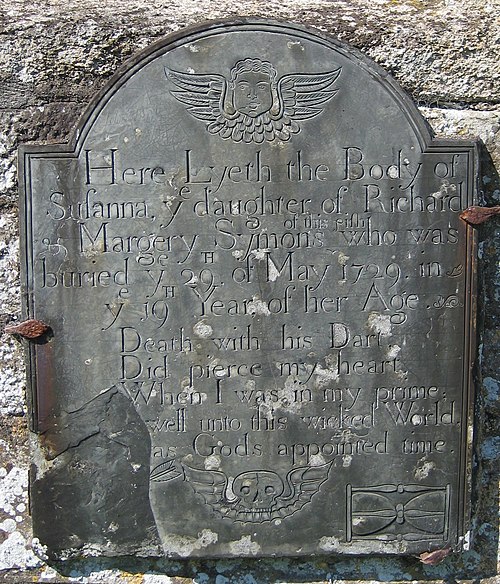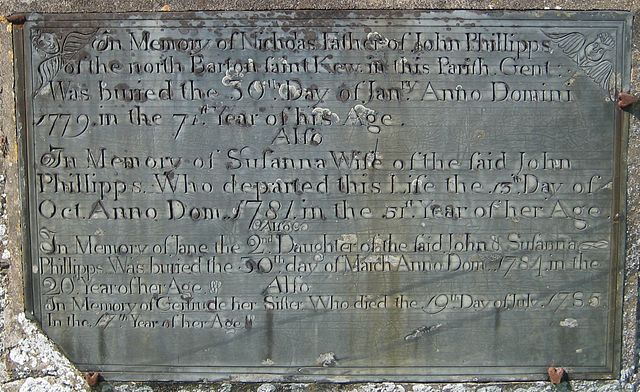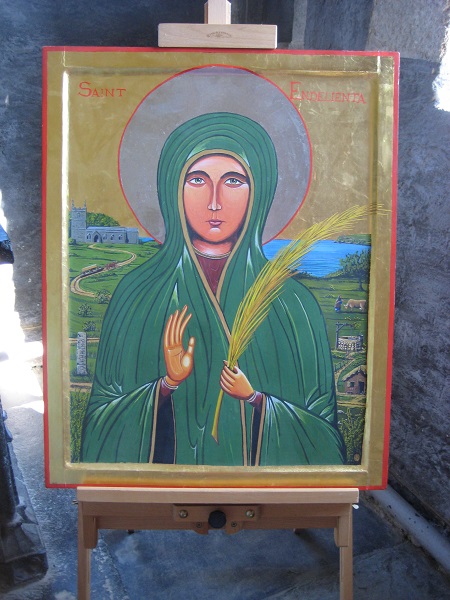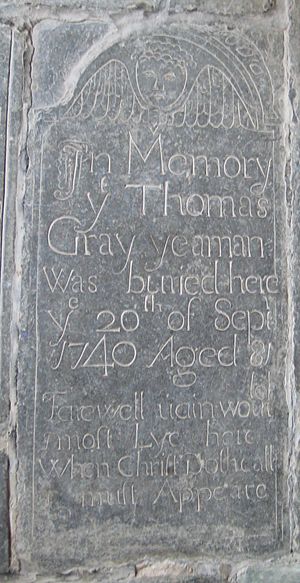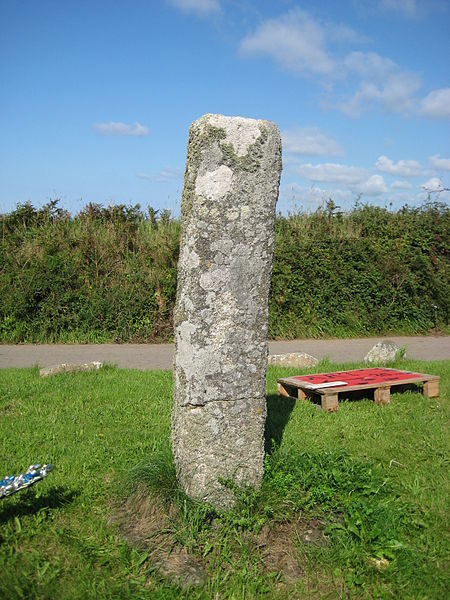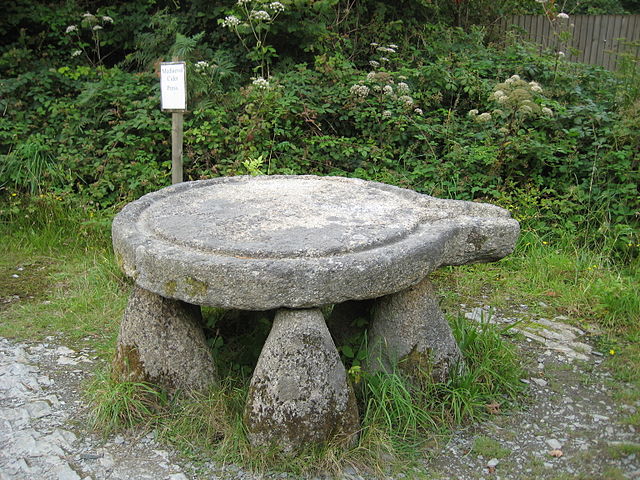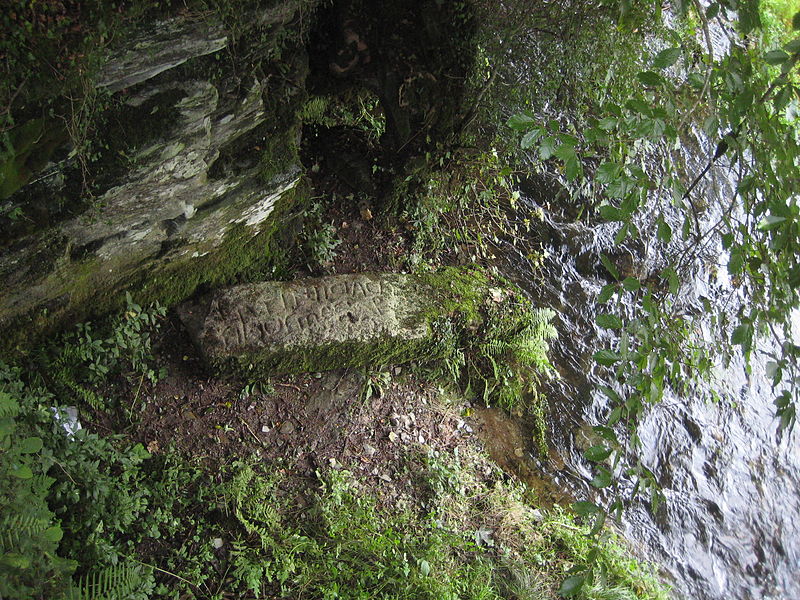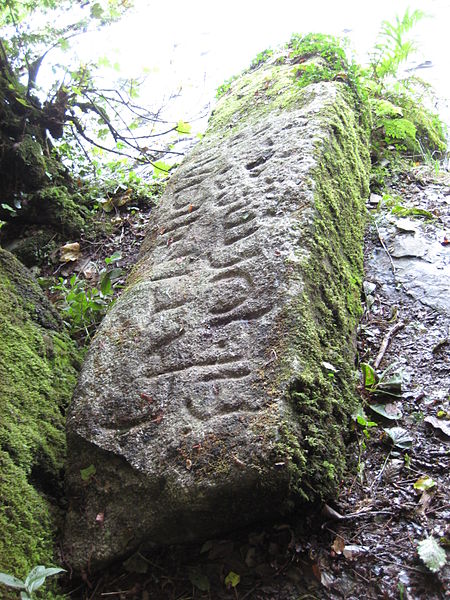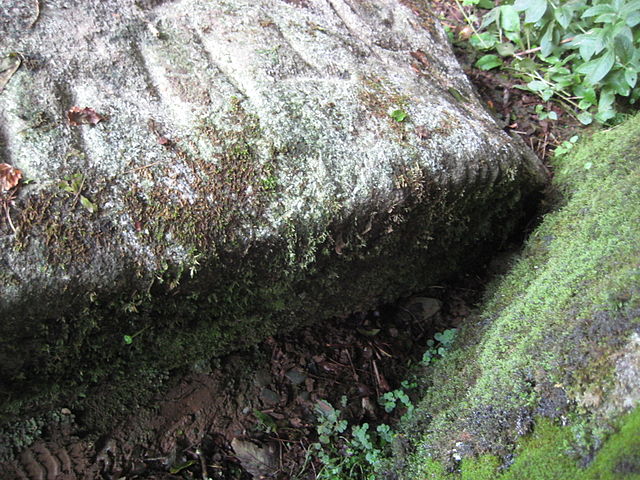Diary of a Rambling Antiquarian
Friday, 27 August 2010
Hunting Ogham Stones in Cornwall
A week in Devon with my youngest daughter, visiting my mother at the seaside resort of Budleigh Salterton. Beach on Monday, golf on Tuesday, beach again on Wednesday, and yesterday we we went fossil hunting at Charmouth in the most torrential rain—we return empty-handed and soaked to the skin. We go home tomorrow, so whatever the weather I am determined to give the beaches a miss and go in search of some of the Ogham stones of ancient Dumnonia that I had written about last year (The Ogham Stones of Cornwall and Devon). I have never seen any of these stones, or indeed any Ogham stones in the wild, and after failing to find any Ogham stones last time I was in Cornwall for a family holiday at the Lizard in 2003, I don't want to miss this opportunity.
It rains ominously through the night, but the sun breaks through the clouds in the morning, and by the time we set off at the stroke of 9.00 the sky is looking clear and blue. I have mapped out a route, and it's only about 60 miles to the first stone. Going over the top of Dartmoor we reach the erstwhile county town of Launceston, dominated by its distinctive Norman castle. We stop to admire, but not enter, the castle, and get lost as we leave the town. Without one of those newfangled satellite navigation systems we are reliant on my battered AA road map, and with the help of oneway road systems we end up on the wrong road, but I'm not quite sure which wrong road we are on. After driving around in circles we eventually find ouselves back on the main A30 road heading in the right direction. We exit the main road along a narrow, winding road signposted for Lewannick. It turns out that we should have taken the next exit, but we soon find the village and its church, St Martin's.
St Martin's Church, Lewannick
The first stone is situated to the left of the lych gate on the south side of the churchyard. The Latin inscription is extremely worn, and I cannot make out any letters with certainty. The Ogham inscription is also very worn, and the top part cannot be made out at all. Oddly, the lower part of the Ogham inscription, which Macalister drew with dotted lines, is relatively clear, and the letters "G", "N" and "V" of "IGENAVI" can be read. The "I" at the start of the Ogham inscription is now hidden beneath the surface.
Inscribed stone in churchyard of St Martin's Church
INGEN
VI
MEM
ORIA
ᚔᚌᚓᚅᚐᚃᚔᚋᚓᚋᚑᚏ
[details]
The second stone is inside the church, on the north side of the west end of the church. The stone is in two pieces, as it was when it was found in 1894, built into the wall of the north porch of the church. The Latin and Ogham inscriptions are highlighted with charcoal and are both very clear and legible, although the Ogham inscription on the right edge is only partially visible as that edge is against the wall. The Ogham inscription is written twice, once correctly as ULCAGNI (matching the VLCAGNI in the Latin inscription), and once incorrectly as UDSAGQI (with the strokes of the letters L, C and N branching off to the wrong side of the stem, transforming them into the letters D, S and Q repectively), the former no doubt being a correction for the latter. As the stone currently stands the Ogham inscriptions read from top to bottom (ULCAGNI down the left edge, and UDSAGQI down the right edge), but the stone is certainly wrongly oriented, and it should be stood the other way up, with UDSAGQI running up the left edge and ULCAGNI running up the right edge (Ogham inscriptions normally run up the left edge, so UDSAGQI would represent the first attempt at carving the Ogham name, and when the stonemason realised he had made a mistake with the Ogham letters he made a second, more successful, attempt along the right edge). The only other peculiarity is the orientation of the Latin inscription, which would be expected to run down the face of the stone, but actually runs upwards if the stone is reoriented with the Ogham inscriptions reading from bottom to top.
Inscribed stone inside St Martin's Church
[HI]C IACIT VLCAGNI
ᚒᚂᚉᚐᚌᚅᚔ
[details]
St James' Church, St Kew
After a picnic lunch we get back in the car, and it is about 20 miles or 40 minutes to the village of St Kew and the parish church of St James.
East End of St James' Church
Our third Ogham stone was found in 1924 in the bed of a stream near the parish church of St James, but is now located inside the church, on the south side of the west end of the church, lying on its side on the floor. The Latin and Ogham inscriptions are this time highlighted with chalk, and are both very clear and legible. The stone is a rather odd barrel-shape with no distinct edges for the Ogham letters to run along. Unusually (uniquely?), the short Latin inscription is engraved within a cartouche, and like the stone inside Lewannick parish church the Latin and Ogham inscriptions both unexpectedly run in the same direction.
Inscribed stone inside St James' Church
[I]VSTI
ᚔᚒᚄᚈᚔ
[details]
When we have finished fussing over the Ogham stone, we turn our attention to the rest of the church, which appears to have a number of interesting and unusual features. Over the south door is a large wooden plaque with the Royal coat of arms of England, dated 1661, showing support for the newly restored King Charles II.
Royal coat of arms of England (1661)
At the front of church are a set of wooden stocks and a wooden ox yoke, while outside is an old iron plough.
Wooden stocks
Wooden ox yoke
Iron plough
Among the gravestones inside the church is a beautifully illustrated slate gravestone for Honor Webber (d. 1601). Unfortunately, in the distant past someone thought it would be a good idea to partially obscure it with a radiator and piping.
Gravestone of Honor Webber (d. 1601)
Heere lyeth ye body of Honor ye wife of Iohn Webber of Ambel daughter to Iohn [Callwoodley?] ...
who died ye vith of october 1601 ⁊ had iſſue Honor Richad ⁊ Matthu
In the churchyard I take a few photos of gravestones and memorial stones that caught my fancy.
Gravestone of John Ballamy (d. 1702)
Here lyeth the body of John the sonne of John Ballamy of Drewstenton in the County of Devon Gent and Lucy the Daughter of John Nichols of Trewane Esqr who departed this Life on Tueſday the seventh day of July 1702 Aged 21.
Weep Reader Weep and let thy Mournfull Eyes
With Tears Embalm this Young Mans obſequies.
On his bleſt Shrine who had the Ecchoing prays
Of thoſe that Knew him Studious were his Ways
His Heart so rarely Good, Piety did reſt
With in the Cloſet of his Serious Breſt.
No Oath nor Curſe was from his Mouth ere Known
Drunkenneſs and Pride by him were Never shown.
Take Pattern all Young Men, Extoll his prays
Ballamy deſerv'd a double Wreath of Bayes
All is Vanity but Vertue
Gravestone of Barbara Brown
Here Lyeth the Body of [Barba]ra the wife of [Wil]liam Brown of ...
[y]ear of her Age May ſhe reſt in <peace>
Weep not my Friends & Children dear
That I have left behind
But lead your lifes as I have done
True happinesſs youl Find
Allſo Here Lyeth the
Body of the ſaid William
Brown of this Pſh who
Departed this Life ye 19th
Day of May 1738 in
The 72d year of his Age
And here lyeth ye body
of Ann ye daughter of
The ſaid William Brown
[and] Barbara his wife
[who] departed ...
Gravestone of Susanna Symons (d. 1729)
Here Lyeth the Body of
Suſanna, ye daughter of Richard
& Margery Symons <of this ꝑiſh> who was
buried ye 29TH of May 1729, in
ye 19TH Year of her Age.
Death with his Dart,
Did pierce my heart.
When I was in my prime;
[Fare]well unto this wicked World,
['Tw]as Gods appointed time.
Memorial stone for Nicholas Phillipps and family
In Memory of Nicholas Father of John Phillipps
of the north Barton ſaint Kew in this Pariſh Gent:
Was buried the 30th Day of Janry Anno Domini
1779 in the 71ſt Year of his Age.
Alſo
In Memory of Suſanna Wife of the ſaid John
Phillipps. Who departed this Life the 13th Day of
Oct Anno Dom. 1781. in the 51ſt Year of her Age.
Alſo
In Memory of Jane the 2nd Daughter of the ſaid John & Suſanna
Phillipps. Was buried the 30th day of March Anno Dom. 1784. in the
20th Year of her Age.
Alſo
In Memory of Gertrude her Siſter. Who died the 19th Day of July 1785.
In the 17th Year of her Age.
St Endelienta's Church, Endellion
Our next stop is the parish church of St Endelienta in the nearby village of St Endellion, made famous earlier this week (on Tuesday) when the Prime Minister's wife went into labour while the Camerons were holidaying at the village [their daughter was later named Florence Rose Endellion]. The press have all left the village, and the church is now empty.
Icon of St Endelienta by John Coleman
{Painting © John Coleman}
Gravestone of Thomas Gray (d. 1740)
In Memory
yt Thomas
Gray yeaman
Was buried here
ye 20th of Sepr
1740 Aged 81
Farewell uain wourld
I moſt Lye here
When Chriſt Doth call
I muſt Appeare
However, the object of our search is not in the church, but on a grass island at a junction of a small road about a mile north of the village.
Stone Pillar at St Endellion
This stone is supposed to have a chi-rho cross and a Latin inscription BROCAGNI IHC IACIT [N]ADOTTI FILIVS ("Of Brocagnus, here lies the son of Nadottus") [details], but the stone is covered in lichen and I can find no trace of the cross or the inscription, even though Elisabeth Okasha and Charles Thomas both examined the inscription during the early 1990s. Is this even the correct stone? It seems to be in the right place and there are no other standing stones in the vicinity, so I think it must be, but I remain unconvinced. Macalister notes that in addition to the Latin inscription there are "faint and doubtful traces of Ogham" along one edge, which is the reason we are here in the first place. However, no other experts have recognised an Ogham inscription on the stone, and if I can't even see the Latin inscription there is no way I am going to see any faint and almost certainly imaginary Ogham letters under the carpet of lichen. I leave despondent, with the sinking feeling that the last stone on today's itinerary cannot be any more legible than this one as it has been lying unprotected on the bank of the River Camel for over 200 years.
River Camel at Slaughterbridge
We find the bridge over the River Camel at Slaughterbridge with no great difficulty, but there is no obvious path up the river to where the stone is supposed to lie, about 100 yards upstream from the bridge. However, a signpost directs us to the Arthurian Centre, a short distance along the road, where it seems that access may be gained to "King Arthur's Stone". The centre closes at 5.00, in twenty minutes time, so my daughter and I hasten to purchase entrance tickets, leaving my mother behind to enjoy the carpark. The centre is a family-run affair that appears to be based on the supposed connection between the stone and the legend of King Arthur, and to be honest it does not seem to have very much to offer most holidaymakers. But we are no ordinary holidaymakers, and we excitedly set off down the the trail signposted to "King Arthur's Stone". On the way we pass a seasonally abandoned archaeological excavation of a medieval village and a stone cider press, optimistically labelled as being medieval in date.
Stone cider press
After crossing several fields we enter a wood, and can hear the gurgling of the river far below. We soon arrive at a wooden viewing platform overlooking the river, and there it is on a muddy little beach below us—a huge rectangular stone with its Latin inscription clear and legible, even at this height.
Vpon the riuer of Camel, neere to Camelford, was that laſt diſmal battel ſtrooken betweene the noble king Arthur, and his treacherous nephew Mordred, wherein the one took his death, and the other his deaths wound. For teſtimony whereof, the olde folke thereabouts will ſhew you a ſtone, bearing Arthurs name, though now depraued to Atry.
—Richard Carew (1555–1620), Survey of Cornwall (1602) page 122b
Inscribed Stone from the Viewing Platform
We have a good view of the stone, but not good enough for us, so we clamber down the steep pathless slope separating us from the river, holding tight from branch to branch as we edge our way past a section of precarious cliff. Safely at the water side, the great stone, just over 2 metres in length, is even more impressive than when seen from above. The Latin inscription is in good condition, and is quite legible, except for the middle two letters and last letter of "MAGARI", and the final letter of "IACIT".
Inscribed stone on the bank of the River Camel
LATINIICIACIT
FILIUSMAGARI
[details]
The brief Ogham inscription on the far edge is badly worn, but the final "I" of "LATINI" can still be easily recognised.
Detail of Ogham Inscription
ᚂᚐᚈᚔᚅᚔ
With a sense of extreme satisfaction at having successfully seen and touched all the certain Ogham stones in Cornwall, we return to the car and drive the short distance to the popular tourist destination of Tintagel Castle for an early evening walk up the headland and down to the sea (little of antiquarian interest here) before heading back to Devon. Next year, perhaps, we will try to visit the one certain Ogham stone still standing in Devon ...
Appendix: Me looking bewildered with the Ogham Stones
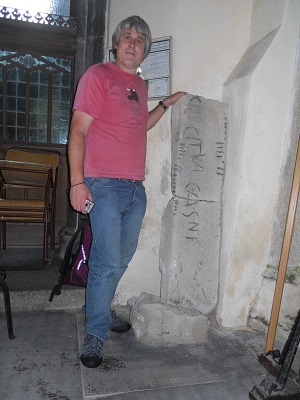

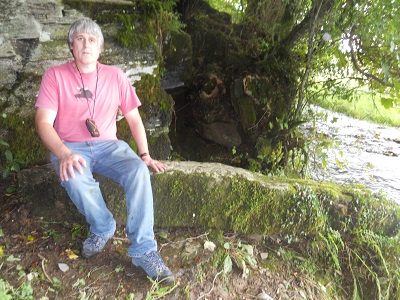
Index of Rambling Antiquarian Blog Posts
Rambling Antiquarian on Google Maps
